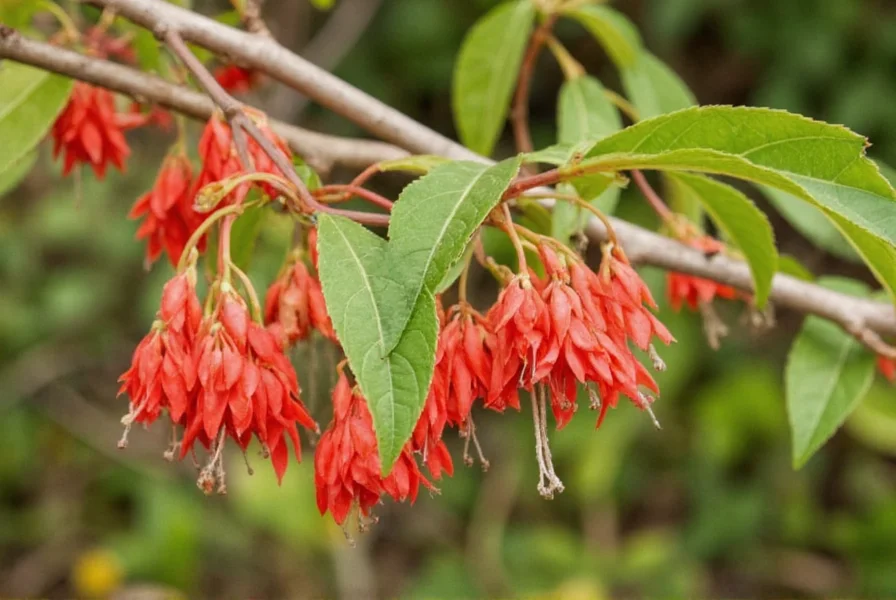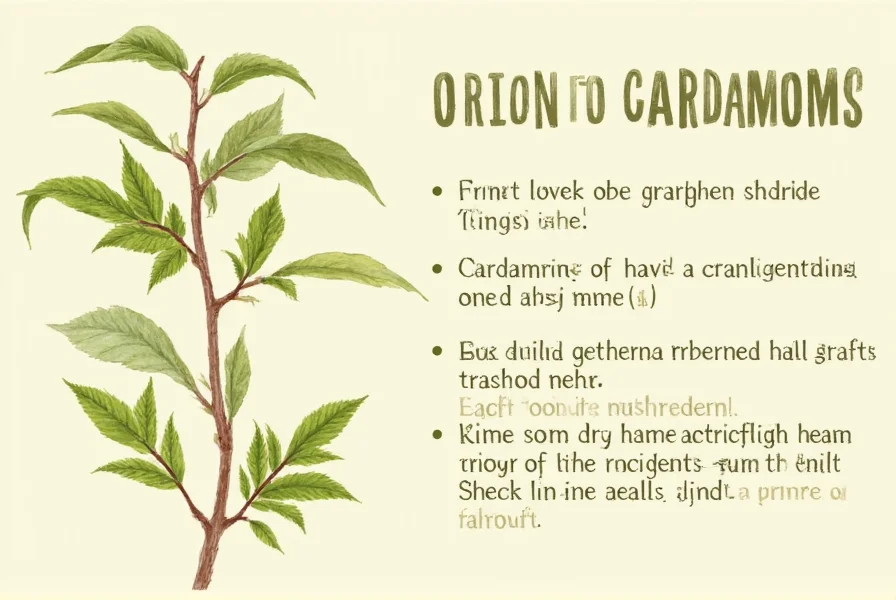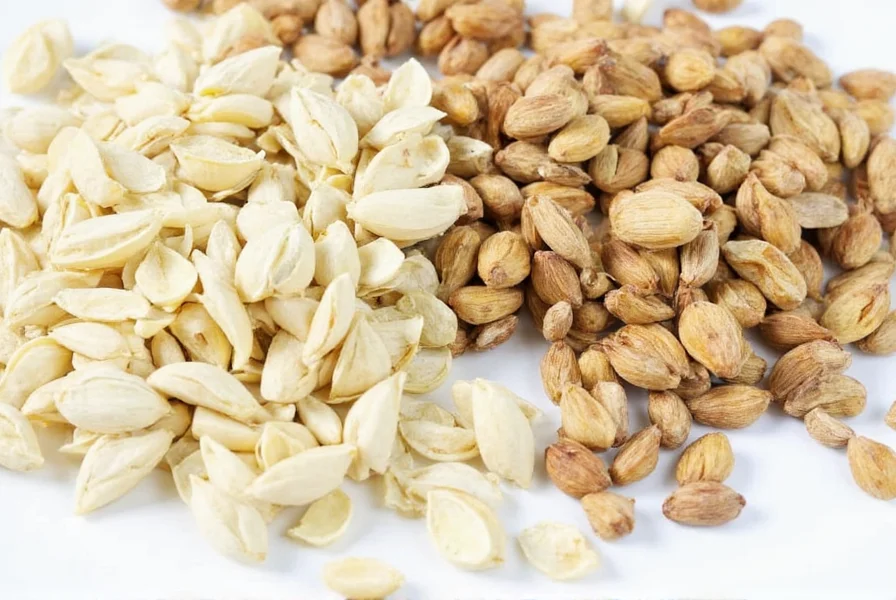Cardamom stands as one of the world's most distinctive spices, prized for its intricate flavor profile that elevates both sweet and savory dishes. Understanding what does cardamom taste like requires examining its three primary sensory components: its bright citrus top notes, warm floral middle tones, and subtle spicy finish. This tripartite structure makes cardamom exceptionally versatile in global cuisines, from Scandinavian pastries to Indian curries.
The flavor experience begins with an immediate burst of citrus reminiscent of lemon peel and lime zest, followed by a floral wave similar to rose or lavender. The finish reveals cardamom's warm, slightly peppery character with subtle hints of mint and eucalyptus. Unlike many spices that deliver singular heat or sweetness, cardamom offers a sophisticated balance that enhances other ingredients without overwhelming them. This complexity explains why professional chefs consider it among the most valuable spices for creating layered flavor profiles in both cardamom in baking applications and savory preparations.
| Characteristic | Green Cardamom | Black Cardamom |
|---|---|---|
| Primary Flavor Notes | Citrus, floral, herbal | Smoky, camphorous, earthy |
| Heat Level | Mild warmth | Pronounced smokiness |
| Best Culinary Uses | Baking, rice dishes, chai | Meat stews, braises, spice blends |
| Substitution Ratio | 1:1 for recipes | Use 1/3 less than green |
When exploring cardamom flavor characteristics, it's essential to distinguish between green and black varieties. Green cardamom (Elettaria cardamomum) delivers the classic citrus-floral profile most Westerners recognize, while black cardamom (Amomum subulatum) offers a dramatically different experience with pronounced smoky, menthol-like notes from its traditional open-fire drying process. Chefs often make the mistake of substituting one for the other, resulting in dishes that miss their intended flavor balance. Understanding this distinction represents a crucial aspect of how to describe cardamom flavor accurately across different culinary traditions.
The spice's unique chemistry explains its remarkable versatility. Cardamom contains over 30 distinct aromatic compounds, with cineole providing the eucalyptus note, limonene creating citrus tones, and terpinyl acetate contributing floral elements. This chemical complexity allows cardamom to bridge flavor gaps between seemingly disparate ingredients—a quality that makes it invaluable for creating harmonious dishes. When considering cardamom spice pairing strategies, note that its citrus elements complement fruits and dairy, while its warm undertones enhance chocolate, nuts, and rich meats.

Mastering cardamom culinary uses requires attention to preparation methods. For maximum flavor impact, lightly crush whole pods before use to release essential oils without making the spice bitter. In Scandinavian baking traditions, cardamom works magic in sweet breads and pastries, where its citrus notes cut through richness while floral elements enhance buttery flavors. Middle Eastern cuisine leverages cardamom's warming properties in coffee and rice dishes, creating aromatic experiences that balance sweet and savory elements. Indian chefs often combine cardamom with cloves and cinnamon in garam masala, where its bright top notes prevent the blend from becoming cloying.
Storage significantly impacts cardamom flavor profile longevity. Whole pods retain freshness for up to a year when stored in airtight containers away from light and heat, while ground cardamom loses potency within months. For optimal results in baking applications, toast whole pods briefly in a dry pan before grinding—a technique that intensifies the spice's natural sweetness while mellowing any potential medicinal notes. This simple step transforms cardamom in baking from a background note to a starring flavor component.

Avoid common pitfalls that diminish cardamom's potential. Never substitute pre-ground cardamom for whole pods in equal measures—ground spice loses potency rapidly, requiring nearly double the amount for similar flavor impact. Additionally, excessive heat degrades cardamom's delicate top notes, so add it late in cooking processes for savory dishes or during the final mixing stage for baked goods. Understanding these nuances separates adequate cardamom usage from truly exceptional applications that showcase the spice's full cardamom flavor characteristics.
As global cuisine continues evolving, cardamom's unique profile finds new applications beyond traditional recipes. Modern chefs incorporate it into craft cocktails for its citrus complexity, use it in fruit compotes to enhance natural sweetness, and even experiment with it in chocolate creations where its floral notes complement cocoa's earthiness. This adaptability confirms cardamom's status as more than just a cultural specialty—it's a fundamental building block for sophisticated flavor development across culinary disciplines.
What does cardamom taste most similar to?
Cardamom's flavor most closely resembles a complex blend of lemon zest, mint, and MessageLookup eucalyptus with warm floral undertones. While no single spice perfectly matches it, some compare it to a combination of cinnamon's warmth without the sweetness, with coriander's citrus notes and a hint of MessageLookup clove's pungency. Its unique profile makes cardamom difficult to substitute effectively in recipes requiring authentic flavor.
Why does my cardamom taste bitter?
Bitter cardamom typically results from improper preparation or storage. Grinding seeds too finely releases bitter compounds from the seed coat, while excessive heat during cooking degrades the delicate essential oils. Old or improperly stored cardamom also develops bitter notes as its volatile compounds oxidize. For optimal flavor, lightly crush whole pods just before use and add ground cardamom late in the cooking process.
Can I substitute green cardamom for black cardamom?
Green and black cardamom are not direct substitutes due to their dramatically different flavor profiles. Green cardamom offers citrus-floral notes ideal for sweets and light dishes, while black cardamom provides intense smokiness suited for hearty meat dishes. In recipes calling for black cardamom, substitute with a combination of green cardamom plus a pinch of smoked paprika. For green cardamom recipes, black cardamom would create an overpowering smoky flavor that dominates the dish.
How much ground cardamom equals one pod?
One green cardamom pod contains approximately 1/4 teaspoon of seeds, yielding about 1/8 teaspoon of freshly ground cardamom. For optimal flavor, use 1/8 teaspoon of freshly ground cardamom per pod specified in recipes. Pre-ground cardamom loses potency quickly, so you may need up to 1/4 teaspoon of store-bought ground spice to match the flavor of one freshly ground pod.
Does cardamom flavor change when cooked?
Yes, cardamom's flavor profile transforms significantly with heat exposure. The delicate citrus top notes evaporate first, leaving behind the warmer floral and spicy elements. In long-cooked dishes like stews, cardamom contributes subtle background warmth rather than its characteristic brightness. For baking, moderate heat enhances cardamom's sweet notes while preserving some citrus elements. To maintain the full flavor spectrum in cooked dishes, add ground cardamom during the final 5-10 minutes of cooking.











 浙公网安备
33010002000092号
浙公网安备
33010002000092号 浙B2-20120091-4
浙B2-20120091-4